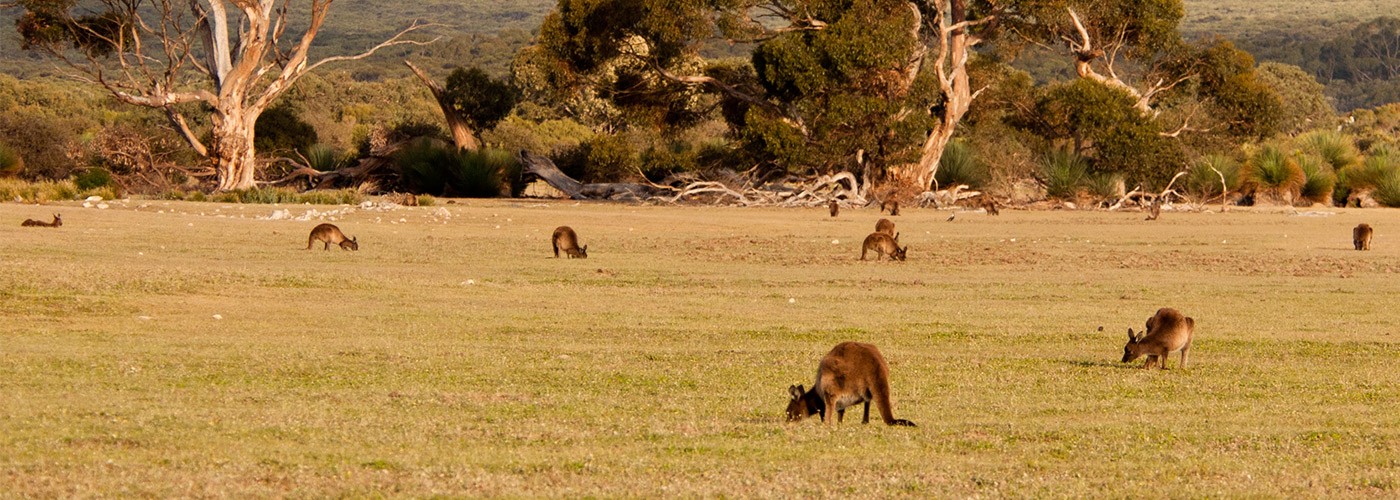Climate Overview:
South Australia, like its neighbours, is driest in the interior with rainfall increasing as one moves toward the coast. These southern and coastal regions have a milder Mediterranean climate, while the rest of the state is classified as semi-arid to extremely arid. South Australia gets most of its annual rainfall in winter (June – August) and most of this falls in the south. Central and northern areas can experience extreme heat and severe drought in the summer – especially in the central part of the state.

Temperature:
South Australia’s average temperature range is around 29 °C in summer and 15 °C in Winter, however, the centre of SA can experience extreme heat, with daily temperatures January and February reaching up to 48 °C. As one would expect, evaporation rates are high in summer and UV levels are dangerous.
The highest official temperature recorded in Australia was recorded in SA – a blistering 50.7 °C at Oodnadatta.
South Australia average annual rainfall:

The rainfall across SA is affected by the frontal systems and the Southern Annular mode; both weather patterns which have an influence on the length and severity of the rainfall periods.
The aforementioned ‘frontal systems’ refers to both warm and cold fronts (the result of varying air temperature and winds), but in general it is the cold fronts which have more of an impact on South Australia’s rainfall.
The Southern Annular Mode is the north to south movement of the strong winds that dominate the middle to higher latitudes of the Southern Hemisphere. When the Southern Annular mode is in these winds result in increased rainfall in regions of SA, particularly along the coast.
The average annual rainfall in the southern coastal areas is between 400 and 1000mm per annum, and the central areas generally receive between only 100 and 300mm.
South Australia by area:
Coastal Regions:

The coastal regions receive a fair amount of rainfall in winter and are wetter and more temperate than the rest of the state. The areas of Port Lincoln, Maitland, Adelaide and Mount Gambier receive the most annual rainfall on average (600 – 1000 mm), with the rest of the coast falling in the 350 – 500 mm range. The exceptions are Leigh Creek, which is wetter despite being slightly further inland, and coastal areas to the west of Ceduna, which are classified as semi-arid and receive just 200 – 300 ml each year, despite their proximity to the ocean.
Tanks size considerations:
Depending on the roof area (larger surface areas collect more water) and your water use requirements a 46,400 litre tank would be ideal as it allows you to take advantage of the periods with higher rainfall, therefore saving more water in the dry seasons. However, as periods of drought are less common in eastern coastal areas, a 22 000 litre tank would also work for small homes and personal use.
Other water storage factors to consider:
• Check your tank regularly and service when required.
• Try to ensure that all pipes have a continuous downward slope so water doesn’t become stagnant in the bends between rains.
• Check pumps and pipes for leaks, especially after periods of severe weather.
• Ensure that your gutters are cleaned before the rainy season (we recommend every 3 – 6 months)
• Installing filtration or leaf guards will prevent leaves and other debris from entering the tank – these will also need to be cleaned on a regular basis to prevent blockages.
• Take your roof size/area into consideration when selecting a tank to ensure that the tank you choose is big enough.
Central and Northern areas:

The centre of South Australia is extremely dry, receiving as little as 100 – 200 ml per year. This section also experiences extreme heat and dangerous UV index levels, along with periods of drought. As one moves further north/north-east the rainfall levels increase very slightly, but only into the 200 – 300 mm category. In general, the centre of South Australia is classified as extremely arid and water is very scarce.
Tanks size considerations:
Counter intuitively, a medium sized or larger tank is propitious in these areas to ensure that any rain that falls during the rainy season can be stored to carry you through the dry season. The most popular sizes in this region are the 30,000 litre to 46,400 litre sizes.
Other water storage factors to consider:
• Clean your tank before the rainy season
• Install a constant pressure unit so that you can use your rainwater tank to supplement household activities such as showering and dishwashing
• Shield pipes from harsh sunlight and regularly check all taps and pipes for leaks
• Install water efficient taps and shower heads.
• Stock water troughs should be partially covered or placed in shady areas to prevent excess evaporation.
• Consider installing water tanks on carports or connecting gutters on patio roofs to increase the surface area and your water collection potential – and ensure the whole roof is guttered.
• Only choose dishwashers and other appliances with a high WELS rating.
• Find more water savings tips here

